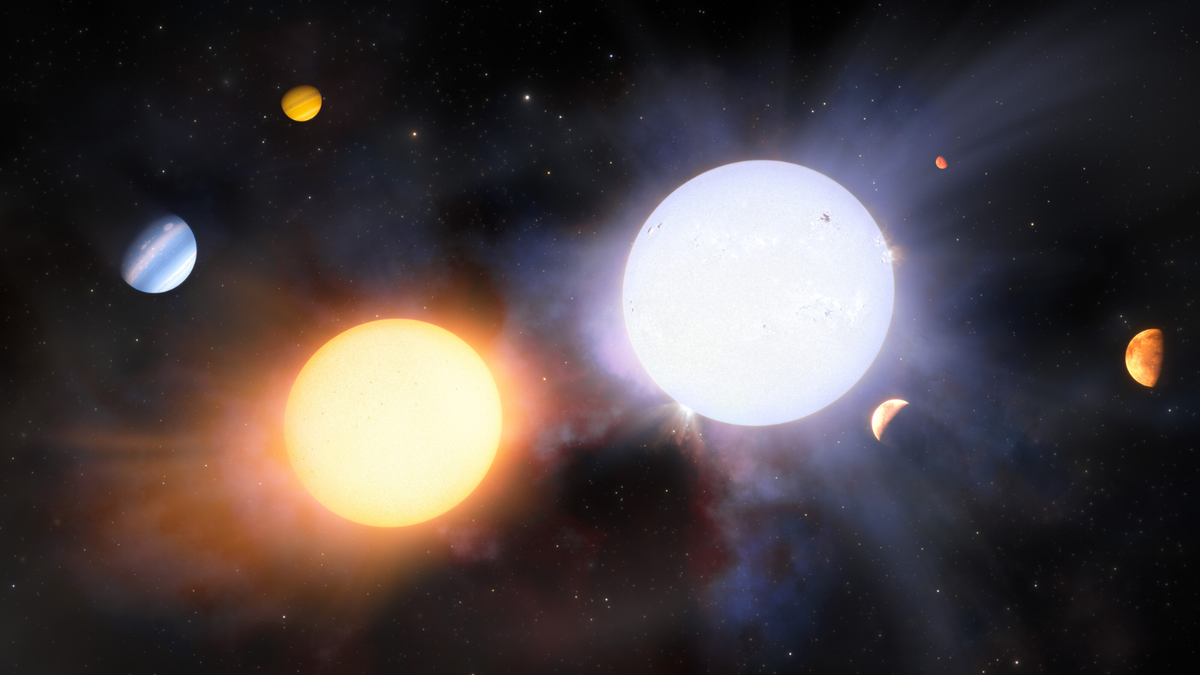Understanding Variability in Binary Stars
Binary stars, despite being born from the same parental cloud of collapsing gas and dust, do not always turn out to be identical twins. This phenomenon has puzzled astronomers for quite some time. Recent research findings suggest that differences in chemical compositions of binary stars can be traced back to variations in the chemical compounds found in the vast molecular cloud from which they originate.
Binary Star Systems: An Overview
While our solar system primarily consists of a single star (the sun), around 85% of stars in the universe exist within binary systems, with two stars orbiting each other. The prevailing assumption has been that these binary stars, having formed from the same cloud of gas, should have almost identical chemical compositions and planetary systems. However, observations have shown that this is not always the case.
A team of scientists, utilizing the Gemini South telescope located in Northern Chile, has conducted research shedding light on the origins of these differences. The study has confirmed that the chemical disparities observed in binary stars can be attributed to pre-existing variations in the chemical compounds of the molecular cloud in which they were formed.
The Role of Molecular Cloud Chemistry
Lead researcher Carlos Saffe, from the Institute of Astronomical, Earth, and Space Sciences, highlights the significance of these findings. According to Saffe, the presence of primordial differences in chemical compositions among binary stars challenges previous notions of star and planet formation, suggesting a more intricate and diverse universe than previously imagined.
The study conducted by Saffe’s team aimed to unravel the timeline at which twin stars begin to exhibit differences. Prior to this research, scientists speculated on various explanations for these variations, with some suggesting that changes occurred long after the stars’ formation.
Insights from High-Resolution Spectrography
By employing the Gemini High-Resolution Optical Spectrograph (GHOST), the team analyzed the spectra of two giant stars within a binary system called HD 138202+CD−30 12303, located approximately 1,720 light-years away from Earth. Through this analysis, the researchers were able to rule out certain theories that could not account for the observed chemical differences.
Moreover, the presence of convective zones in the external layers of the stars was crucial in eliminating certain explanations, leading the scientists to support the theory of primordial differences as the likely cause. This discovery marks a significant breakthrough in understanding the origins of binary star variability, offering insights into the diverse nature of planetary systems influenced by these stars.
Furthermore, the research not only addresses the mysteries surrounding binary star formations but also prompts a reevaluation of how stellar origins are determined based on chemical compositions. By demonstrating that stars with distinct chemistry can emerge from the same gas clouds, the study challenges existing paradigms in stellar evolution and planetary formation.
Implications for Planetary Evolution
As the team’s findings suggest, the differences in stellar chemistry can result in unique planetary systems, varying in composition and potential habitability. This revelation underscores the complexity of planetary evolution around binary stars and raises questions concerning the conditions necessary for supporting life on these diverse worlds.
Moreover, the research findings may compel astronomers to revisit their understanding of stars previously thought to have engulfed orbiting planets. The presence of specific chemical elements on stellar surfaces, once attributed to planetary ingestion, could potentially be linked to the stars’ distinctive origins and compositions.
In conclusion, the investigation into binary star variability offers a glimpse into the intricate processes governing star and planet formation, highlighting the intricate interplay between stellar composition and planetary evolution. The team’s groundbreaking research, published in Astronomy & Astrophysics Letters, marks a significant step towards unraveling the mysteries of our dynamic universe.
Image/Photo credit: source url





